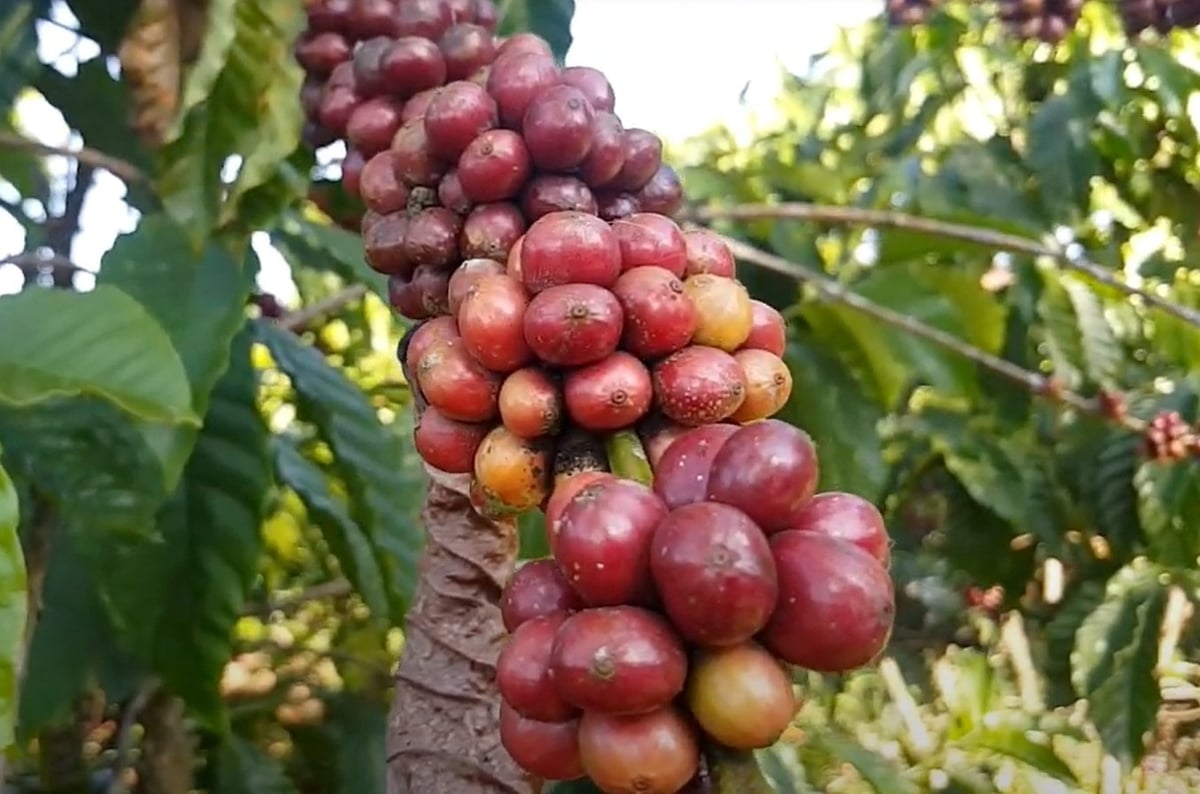(VAN) Although Vietnam is still increasing its coffee exports, the industry is currently in the process of determining market strategies in response to the U.S. imposition of reciprocal tariffs.

Farmers in the Central Highlands harvest coffee. Photo: Son Trang.
In Vietnam, the price of coffee has experienced substantial fluctuations in recent years. Following the announcement by President Donald Trump of reciprocal tariffs on trade partners, the price of coffee in Vietnam experienced a significant decline. Nevertheless, market sentiment progressively stabilized as a result of his decision to postpone the tariff imposition in order to facilitate negotiations, which facilitated a significant rebound in coffee prices. Coffee prices had decreased by only 1.5% since the beginning of April.
In May, the price of coffee in Vietnam continued to fluctuate and is presently on a downward trend. This decline, according to Nguyen Quang Binh, a coffee market analyst, is not the result of reciprocal tariffs, but rather an abundance of supply.
According to data from Brazil, the country’s Robusta coffee production this year is approximately 25 million bags, which is nearly equivalent to Vietnam’s. Brazil has currently harvested approximately 20 million bags of Robusta coffee.
At the same time, the harvesting of Arabica coffee in Brazil started in a sporadic manner, with approximately 1–2% of the total Arabica crop already harvest. This suggests that the drought in Brazil has indeed had an impact on Arabica coffee this year, as the lack of water has resulted in early development (which typically occurs in July).
Furthermore, Indonesia started the harvesting of its coffee crop in April, with an anticipated total output of 10 million sacks, of which approximately 7 million are Robustas. Additionally, Vietnam maintains a substantial inventory of the 2024–2025 crop.
Vietnam’s coffee exports, which include those to the United States, continue to thrive in spite of the price volatility. 10,000 tonnes of coffee were exported to the United States in April, with a value of USD 56 million. This represents a 21% increase in volume and 80% increase in value when compared to April 2024.
The Department of Import and Export, part of the Ministry of Industry and Trade, has stated that Trump’s 90-day delay in implementing reciprocal tariffs has opened a window for U.S. importers to increase their purchases of a variety of products, including coffee. Vietnamese coffee exporters are also capitalizing on this opportunity to increase their exports to the United States prior to the official imposition of reciprocal tariffs by the government.
The Department predicts that Vietnam’s coffee exports will continue to expand in the short term as a result of the U.S.’s delayed tariff enforcement on the majority of its partners and the abundance of domestic supply, which will motivate importers to purchase in advance of the new tariff regime.

Coffee in Bao Loc, Lam Dong. Photo: Son Trang.
Nevertheless, exports to the United States remain an urgent issue for Vietnam’s coffee industry following the official imposition of reciprocal tariffs by the American government on its trade partners, which includes Vietnam.
At this point, no expert or trader in Vietnam’s coffee industry can provide a definitive forecast. Firstly, it is still unclear what the final tariff rate will be. After that, the comparison between Vietnam’s coffee tariffs and those of Brazil, Indonesia, and other competitors will depend on their implementation.
According to Mr. Nguyen Quang Binh, Vietnamese coffee was already at a competitive disadvantage compared to Brazilian coffee due to higher shipping costs, even before the implementation of reciprocal tariffs. Consequently, Vietnamese coffee will encounter even greater challenges in competing with Brazilian coffee, which is not subject to these tariffs, once the U.S. formally enforces the tariffs.
One solution being considered by many exporters, should high reciprocal tariffs be imposed, is to shift market focus. However, this is not an easy task. The EU, Vietnam’s largest coffee market, is also at risk of high U.S. tariffs imposed by Trump, which could impact consumption in the region. The EU also processes and re-exports a portion of its imported Vietnamese coffee to the United States. Consequently, if the United States encounters substantial tariffs that impede its purchase of EU coffee, it may opt to decrease its imports from Vietnam.
Considering this, the expansion of exports to China could alleviate the burden on the U.S. market, as China’s coffee market is also growing. To increase market share in China, it is necessary to implement a comprehensive strategy that emphasizes promoting official exports to this market, rather than relying largely on cross-border trade, as is the current practice.
Vietnam exported 666,000 tonnes of coffee in the first four months of this year, representing a 9.4% decrease in volume compared to the same period last year. However, the value of Vietnamese exports increased by 52%, reaching nearly USD 3.8 billion. This is the highest export value for the first four months of any year to date.
Coffee exports to the United States totaled 43,000 tonnes, valued at USD 238 million, during this period. In comparison to the same period in 2024, this represents a 6.8% decrease in volume but a 57% increase in value.
Agriculture News | Agri Products Price



